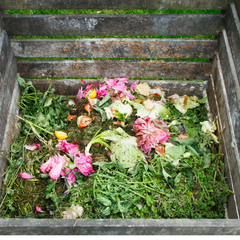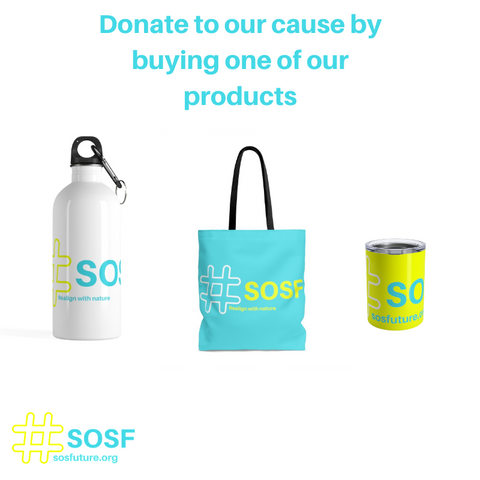How To Compost At Home

Unless you’ve been living under a rock, you’ve probably heard of composting and how great it is for the environment and your garden. If you have a green thumb and you like to give your plants their best, then you should start composting right now. It’s nature’s way of recycling and for the sake of enriching your garden soil and making it fertile, everyone has gotten in on the compost movement. If you have not started composting yet, that’s okay! It’s not too late to get started and one of the best ways to do it is from the comfort of your home as it’s quite easy to do.
We’re excited you want to do something extra for your plants as compost can be added to make your soil fertile which could help you grow some nice veggies in your garden. Composting is known to be one of the ways that organic waste is biodegraded. If it sounds like an adventure you would like to get in on, keep reading to learn exactly how to compost at home.
Get your equipment ready
 This sounds a lot more sophisticated than it is. Some people like to have a simple rot pile, you can have it located in your backyard or somewhere around the house where you can dump vegetables, leaves and other compost materials or you could choose to get a nice bin for your compost instead. What’s great about this part is that you can purchase a good bin online or use any old kind of container laying around your house that is no longer in use. You can also use a wood one to be completely zero waste! Whatever kind of bin you decide to use, make sure it’s easy to rotate so you can turn your compost around and mix it up. If you’re going with the option of a rotting pile, it shouldn’t be too high, about 3 feet would do so you can easily mix it but it should be compact enough to retain heat.
This sounds a lot more sophisticated than it is. Some people like to have a simple rot pile, you can have it located in your backyard or somewhere around the house where you can dump vegetables, leaves and other compost materials or you could choose to get a nice bin for your compost instead. What’s great about this part is that you can purchase a good bin online or use any old kind of container laying around your house that is no longer in use. You can also use a wood one to be completely zero waste! Whatever kind of bin you decide to use, make sure it’s easy to rotate so you can turn your compost around and mix it up. If you’re going with the option of a rotting pile, it shouldn’t be too high, about 3 feet would do so you can easily mix it but it should be compact enough to retain heat.
Select a location
Let’s face it, compost is actually waste and like some waste, it might come with some unpleasant smells as composting is biodegraded organic waste and no one wants to have it smacked in their face each time they walk past your yard. While you decide to do your recycling with nature, choose a place where you can keep your compost safely, out of the reach of foraging animals and with enough exposure to air so the breeze helps keep your compost cool and aerated. It’s also great to have your location close to shade and enough access to water.
Start tossing in your materials
 This is the fun part! After setting up your compost site and getting your rot pile or compost bin ready, the next step is to begin the good work of recycling natures way! There are lots of stuff you can add to your compost as long as they are organic and biodegradable. Things like vegetable scraps and peels, coffee grounds, manure from animals like sheep or chickens, yard waste like leaves and sticks and even newspapers or eggshells can go in your compost.
This is the fun part! After setting up your compost site and getting your rot pile or compost bin ready, the next step is to begin the good work of recycling natures way! There are lots of stuff you can add to your compost as long as they are organic and biodegradable. Things like vegetable scraps and peels, coffee grounds, manure from animals like sheep or chickens, yard waste like leaves and sticks and even newspapers or eggshells can go in your compost.
However things like animal products especially meat, bones or butter shouldn’t go in your compost. Also, stuff like synthetic chemicals, ash, seeds or pet waste should have no place in your compost. You should have a nice balance of brown materials and green materials so your compost gets enough carbon and nitrogen and don’t forget to add water sparsely so your compost is moist but don’t over-wet the compost and kill off the bacteria.
Pay close attention to your compost
It’s not enough to just toss your compost materials in your rot pile or bin and walk away, you have to monitor it, check on it often and make sure it maintains the right temperature of being warm so the composting process stays active. This will also let you know when your pile needs to be mixed or turned. You can use your hands or a thermometer to check your compost temperature and if it was previously warm but turns cold later, you need to give it a nice turn to get the process back in action. It’s also important that your compost stays moist and gets enough oxygen so the bacteria keeps working. You can use a pitchfork to turn your compost and you should also add moisture to your dry materials like sawdust and dry leaves when you add them to your composting pile.
Wait for your compost to mature
 The waiting process can take anything from weeks to months or years before your compost is ready. You can help the process along by covering your rot pile or compost bin with a tarp to retain the moisture content of your compost. This isn’t strictly necessary and you can skip this part if you want to. So if you are wondering how to know when your compost is ready, look at the bottom of the pile of your compost. If it is dark and rich in color then your compost is nice and ready to use.
The waiting process can take anything from weeks to months or years before your compost is ready. You can help the process along by covering your rot pile or compost bin with a tarp to retain the moisture content of your compost. This isn’t strictly necessary and you can skip this part if you want to. So if you are wondering how to know when your compost is ready, look at the bottom of the pile of your compost. If it is dark and rich in color then your compost is nice and ready to use.
Start using your compost
When your compost is ready, you can now mix it into your garden soil to act as an enricher or fertilizer or lay down some of your compost on top your garden or lawn soil to act as mulch. In no time you’ll notice a difference in how your plants are faring and you’ll be all the more glad you decided to learn how to compost at home.
Conclusion
There are no strict laws to how many compost piles you can have at a time, as long as you have enough space and materials to put in, you can have as many compost piles as you want to keep your gardens and landscape going. With the tips we’ve shared with you above, you’ll be recycling in nature’s way in no time and your garden will thank you for it.
The process is pretty easy and basically every material you need is right at your fingertips. You’ll be able to avoid wasting things like vegetable scraps and other organic biodegradable waste by putting them to good use in creating the compost of your dreams.
TO HELP US CONTINUE WITH OUR MISSION YOU CAN:
Thank you, thank you, thank you, we could not do it without you!
DONATE :
BUY ONE OF ECO-FRIENDLY PRODUCTS:
ALSO DISCOVER:
How Recycling helps the environment
Pollution and ways to prevent pollution
How to be More Eco-Friendly
How Bad Are Pollutants Affecting The Ecosystem?
What you need to know about plastic breakdown
How ships are affecting the environment
How To Detect Shark In Our Daily Products?
20 Zero Waste Resolutions For 2020
The Alarming Effects Of Pollution On Coral Reef




Good basic info. I suggest that people create a dual-bin compost. At the start of each new season, unload the soil that’s ready from one bin, then roll the content that’s been sitting all winter in the 2nd bin into the first one – it becomes next year’s soil. That leaves you one empty bin into which you put your new items. I plan to post a picture on my new blog soon.
Bravo for all these explains for the palm oil and for the compost.
It’s very interesting articles for the future of the planet.
Thanks for the animals too
hi.
is there someone within sosf that we can hire to sift through our compost bin
so we can use the good healthy compost for our yard?
of course we would be happy to pay for the service.
thank you so much,
beth
Hello Dianne, Thank you for your comment
You could compost meat and bones but unfortunately, It will start to smell and attract flies and maggots. It also slows down the composting process. I won’t recommend to put meat or bones or fish in your compost.
why no meat products, bones?